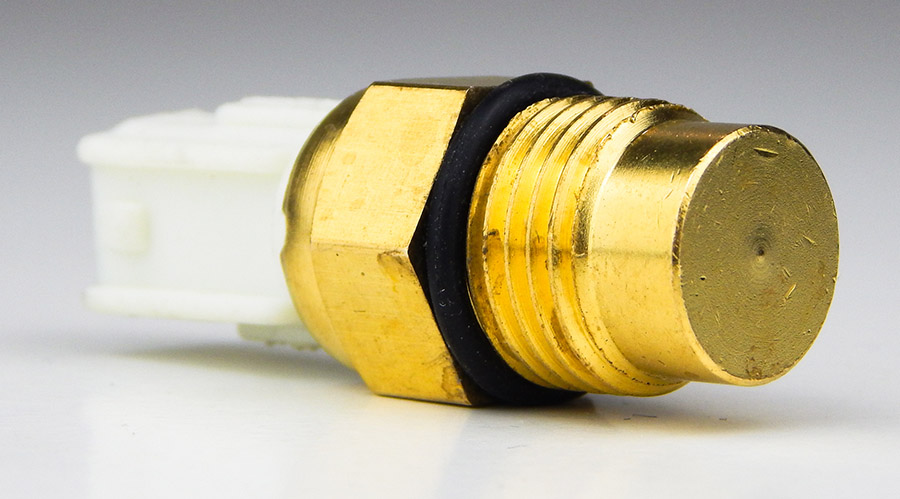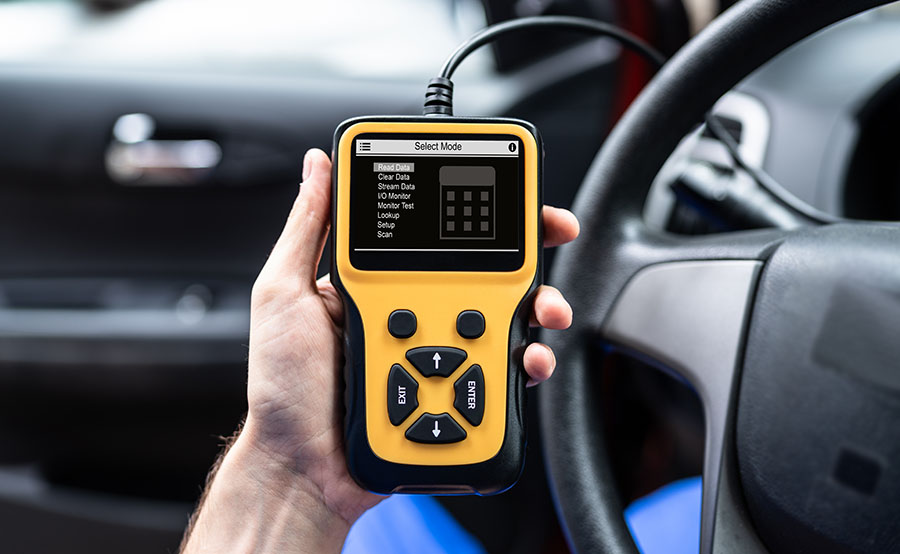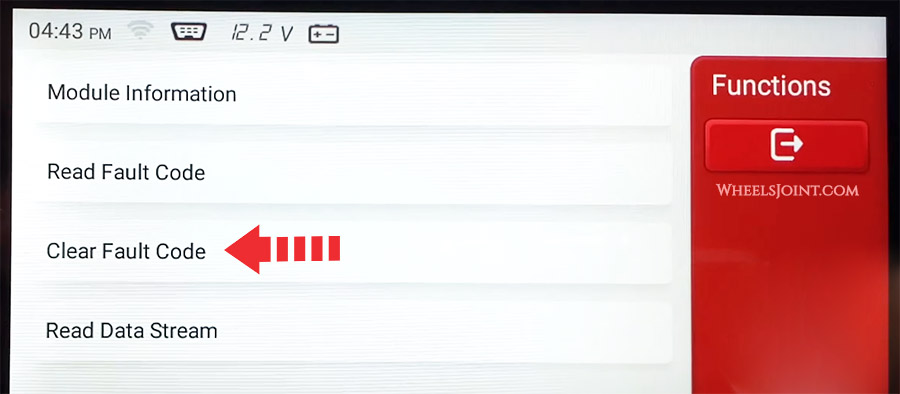The low oil pressure warning light is one of the most important indicators on the dashboard of your Audi Q2. It warns you when your engine is not receiving enough oil pressure, which can cause serious damage to your vehicle’s engine if left unaddressed. In this article, we’ll explore potential causes and provide tips on how to fix them so that you can keep your Q2 running smoothly and avoid costly repairs.

There are several possible causes of low oil pressure warning light  in Audi Q2, including low oil level, a malfunctioning oil pressure sensor, a clogged oil filter, or a failing oil pump.
in Audi Q2, including low oil level, a malfunctioning oil pressure sensor, a clogged oil filter, or a failing oil pump.
1. Low oil level
A low engine oil level can cause the low oil pressure warning light  to turn on in your Q2. This warning light is designed to alert the driver when the engine oil pressure drops below a safe level, indicating that there may be an issue with the engine lubrication system.
to turn on in your Q2. This warning light is designed to alert the driver when the engine oil pressure drops below a safe level, indicating that there may be an issue with the engine lubrication system.

When the oil level is low, the oil pump may not be able to generate enough pressure to properly lubricate the engine components, leading to decreased oil pressure and potentially causing engine damage. In this situation, the low oil pressure warning light will turn on to alert the driver to the issue.
Check oil level
If the low oil pressure warning light turns on, it is important to stop the vehicle as soon as it is safe to do so and check the oil level. If the oil level is low in your Q2, you should add oil immediately to prevent potential engine damage.
Recommended video
2. Wrong oil viscosity
Using oil viscosity other than recommended by the manufacturer for your Audi Q2 can also turn on the low oil pressure light  . It can cause a variety of issues in your vehicle, as the engine oil plays a crucial role in lubricating, cooling, and cleaning the engine components. The viscosity of the oil refers to its thickness or resistance to flow, and different engines require different oil viscosities to function properly.
. It can cause a variety of issues in your vehicle, as the engine oil plays a crucial role in lubricating, cooling, and cleaning the engine components. The viscosity of the oil refers to its thickness or resistance to flow, and different engines require different oil viscosities to function properly.

Oil is too thick, or too thin
Using oil with a viscosity that is too thick can cause issues with oil flow and lubrication, leading to increased engine wear and decreased fuel efficiency. On the other hand, using oil with a viscosity that is too thin can lead to decreased engine protection, decreased fuel efficiency, and increased oil consumption.
Verify the oil viscosity for your engine
To prevent issues with the wrong oil viscosity, it is important to refer to the owner’s manual or consult with a qualified mechanic to determine the correct oil viscosity for your vehicle. When changing the oil, be sure to use oil with the correct viscosity rating and type recommended by the manufacturer.
If you suspect that the wrong oil viscosity has been used in your vehicle, it is important to have it inspected by a qualified mechanic.
3. Oil pressure sensor malfunction
A bad oil pressure sensor can cause the low oil pressure warning light to turn on in your Q2. The oil pressure sensor is responsible for monitoring the oil pressure and sending a signal to the vehicle’s computer, which in turn illuminates the warning light on the dashboard if the oil pressure drops below a certain level.

If the oil pressure sensor is malfunctioning, it may send a false signal to the vehicle’s computer, causing the low oil pressure warning light to turn on even if the oil pressure is actually within a safe range. Alternatively, a faulty sensor may not send a signal at all, causing the warning light to remain off even if the oil pressure is dangerously low.
How to check a faulty oil pressure sensor
If the oil pressure sensor is malfunctioning, it may trigger an OBD fault code in your vehicle’s engine control module (ECM). This fault code can be read using a diagnostic scanner or code reader, and will provide information about the specific nature of the issue with the oil pressure sensor.
Some common fault codes that may be associated with a faulty oil pressure sensor include:
- P0520: Engine Oil Pressure Sensor/Switch Circuit Malfunction
- P0521: Engine Oil Pressure Sensor/Switch Circuit Range/Performance
- P0522: Engine Oil Pressure Sensor/Switch Circuit Low Voltage
- P0523: Engine Oil Pressure Sensor/Switch Circuit High Voltage
If you receive an OBD fault code related to the oil pressure sensor, it is important to have the issue diagnosed and repaired as soon as possible. A faulty sensor can lead to inaccurate readings and potential engine damage if the oil pressure drops too low.
4. Faulty oil pump
A faulty oil pump can also cause the low oil pressure warning light to turn on in your Audi Q2. The oil pump is responsible for circulating the engine oil throughout the engine, providing lubrication and cooling to the various components.
If the oil pump is not functioning properly, it may not be able to generate enough pressure to properly circulate the oil through the engine. This can result in decreased oil pressure, which can cause the low oil pressure warning light to turn on.
Some signs of a faulty oil pump include engine noise, decreased oil pressure, and oil pressure fluctuations.
Ignoring a faulty oil pump can lead to potential engine damage if the engine is not receiving adequate lubrication and cooling. It is important to address any issues with the oil pump as soon as possible to prevent further damage to the engine.
5. Oil pressure relief valve stuck open
If the oil pressure relief valve is stuck open in the engine of your Audi Q2, it can cause the low oil pressure warning light to turn on. The oil pressure relief valve is designed to regulate the oil pressure in the engine by opening and closing as needed to maintain the appropriate level of pressure.
Oil flows too freely
If the valve becomes stuck open, it can allow the oil to flow too freely through the system, which can result in a decrease in oil pressure. This decrease in oil pressure can cause the low oil pressure warning light to turn on.
6. Clogged oil pickup screen
A clogged oil pickup screen is another possible cause of the low oil pressure warning light turning on in your Q2. The oil pickup screen is located at the bottom of the oil pan and is responsible for filtering out any debris or contaminants that may be present in the oil.

Over time, the oil pickup screen can become clogged with debris, which can restrict the flow of oil through the engine. This restriction can cause a decrease in oil pressure, which can trigger the low oil pressure warning light to turn on.
7. Oil pickup tube cracked, sucking air
If the oil pickup tube in your engine is cracked, it can cause the low oil pressure warning light to turn on in Q2. The oil pickup tube is responsible for drawing oil from the oil pan and sending it through the engine for lubrication and cooling.
If the pickup tube is cracked, it can allow air to enter the oil system, which can disrupt the flow of oil and cause a decrease in oil pressure. This decrease in oil pressure can trigger the low oil pressure warning light to turn on.
8. Clogged oil filter, and failed bypass value
A clogged oil filter and a failed bypass valve are two possible causes of the low oil pressure warning light turning on in your Audi Q2.

The oil filter is responsible for removing contaminants from the engine oil, and over time it can become clogged with debris. If the filter becomes too clogged, it can restrict the flow of oil through the engine, causing a decrease in oil pressure and triggering the low oil pressure warning light to turn on.
The bypass valve is designed to allow oil to bypass the oil filter if the filter becomes clogged. If the bypass valve fails to function properly, it can prevent oil from bypassing the filter and result in a decrease in oil pressure.
9. Oil not changed on time
Oil that has not been changed on time or is too old can also contribute to low oil pressure in your Q2. Over time, engine oil breaks down and becomes less effective at lubricating the engine and removing contaminants. As a result, the oil pressure can drop and cause the low oil pressure warning light to turn on.

May need to flush the engine
If the oil in your Q2 is too old or has not been changed on time, it’s important to have it changed as soon as possible. An oil change will replace the old oil with fresh oil and help restore proper oil pressure. In some cases, it may also be necessary to flush the engine to remove any built-up contaminants that can contribute to low oil pressure.
Always change engine oil on time
Regular oil changes can help prevent low oil pressure issues in your Q2 and prolong the life of the engine. It’s important to consult the owner’s manual for specific oil change intervals and follow the manufacturer’s recommendations to ensure proper engine lubrication and prevent costly repairs.
Recommended video:
Use an OBD Scanner for diagnosis
Using an OBD (On-Board Diagnostics) scanner is a great way to diagnose low oil pressure issues in your Audi Q2. An OBD scanner can connect to your vehicle’s OBD-II port and retrieve diagnostic trouble codes (DTCs) that can help pinpoint the cause of the low oil pressure warning light.

When the low oil pressure warning light turns on, the OBD scanner can be used to retrieve the specific DTC associated with the issue.
Once the DTC has been retrieved, the OBD scanner can also be used to monitor live engine data such as oil pressure, engine RPM, and engine temperature. This data can help identify issues such as a failed oil pressure sensor or a clogged oil pickup screen.
While an OBD scanner can be a useful tool for diagnosing low oil pressure issues in your Q2, it’s important to note that it may not be able to diagnose all possible causes of low oil pressure. In some cases, a visual inspection of the engine or additional diagnostic tests may be necessary to identify the root cause of the issue.
If you’re not comfortable using an OBD scanner or don’t have access to one, it’s important to have your Q2 inspected by a qualified mechanic who can diagnose and repair low oil pressure issues to prevent further damage to the engine.
How to reset the warning light
You can reset the warning light in Q2 by clearing the relevant fault codes with an OBD scanner.

However, it’s important to address the underlying cause of the issue before attempting to reset the light. Simply resetting the light with an OBD scanner by clearing the code will not fix the problem and the light will likely come back on once the system detects the fault again.
The low oil pressure warning light is designed to alert the driver of a potentially serious issue with the engine’s oil pressure. Ignoring the warning and attempting to reset the light without addressing the underlying cause can lead to further damage to the engine and result in costly repairs.
If you’re unsure of the cause of the low oil pressure, it’s best to have your Q2 diagnosed by a qualified mechanic. They can use an OBD scanner to read any fault codes stored in the system and perform additional tests to identify the root cause of the issue. Once the underlying cause has been fixed, the mechanic can reset the warning light and ensure that the engine is running properly.
Frequently Asked Questions
Can I continue driving my Q2 with low oil pressure light on?
If the low oil pressure warning light turns on in your Audi Q2 while you are driving, it is important to take immediate action to avoid potential engine damage. The first step is to safely stop the vehicle as soon as possible, while being mindful of traffic and other road hazards. Once you have come to a safe stop, you should turn off the engine.
It is important to note that driving with low oil pressure can cause serious damage to your engine, as the oil serves as a lubricant to prevent friction and wear between moving parts. If the engine is run without enough oil pressure, it can lead to increased heat and friction, which can cause damage or even complete engine failure.
How long can an engine run with low oil pressure?
It’s difficult to say exactly how long an engine can run with low oil pressure, as it depends on several factors such as the severity of the issue and how quickly the problem is addressed. In general, it’s not recommended to run an engine with low oil pressure for any longer than necessary, as it can lead to significant engine damage or even complete engine failure.
Can I just add oil to my car?
If your vehicle’s low oil pressure warning light has turned on, adding oil to the engine may help increase the oil pressure and prevent further damage, but only if the cause is due to low oil level.
Before adding oil, make sure to check the owner’s manual to determine the correct type and amount of oil needed for your vehicle. It’s also important to check the oil level and ensure that it is not above the maximum level.
Adding too much oil can cause foaming and reduce the oil’s ability to lubricate the engine properly, which can cause further damage. It’s best to add oil in small increments, checking the oil level frequently to ensure that the oil level is within the recommended range.
Will a bad oil pump throw a code?
A bad oil pump can cause low oil pressure and trigger the low oil pressure warning light, but it may not always throw a diagnostic trouble code (DTC) on the OBD system.
The reason for this is that the oil pressure sensor detects the low oil pressure and sends a signal to the engine control module (ECM) which then illuminates the low oil pressure warning light. However, if the oil pressure sensor is working properly, the ECM may not register a fault code related to the oil pump.
That being said, if the oil pump is failing and causing low oil pressure, it may trigger other DTCs related to engine performance or oil pressure. For example, if the oil pressure is low and causing engine misfires, it may trigger a DTC related to misfires. Similarly, if the low oil pressure is causing other engine components to fail, such as the variable valve timing system, it may trigger a DTC related to that system.
Can low oil pressure cause an engine to misfire?
Yes, low oil pressure can cause misfires in an engine. Misfires occur when one or more cylinders in the engine fail to ignite properly, which can cause a variety of symptoms such as a rough idle, decreased power, and increased emissions.
Low oil pressure can cause misfires in several ways. First, low oil pressure can lead to insufficient lubrication of critical engine components, such as the valve train and bearings. Without proper lubrication, these components can wear and fail, leading to engine misfires.
Secondly, low oil pressure can cause variable valve timing (VVT) systems to malfunction, which can also cause misfires. Many modern engines use VVT systems to optimize engine performance and fuel efficiency. These systems rely on oil pressure to operate properly, and if oil pressure is too low, they may not function as intended.
Will the check engine light come on if oil pressure is low?
In some cases, a low oil pressure condition may trigger the check engine light to come on. The check engine light is designed to come on when the engine control module (ECM) detects a fault with one of the vehicle’s systems or components. If low oil pressure is detected as a fault, the ECM may illuminate the check engine light and store a code in its memory for retrieval with a diagnostic scanner.









